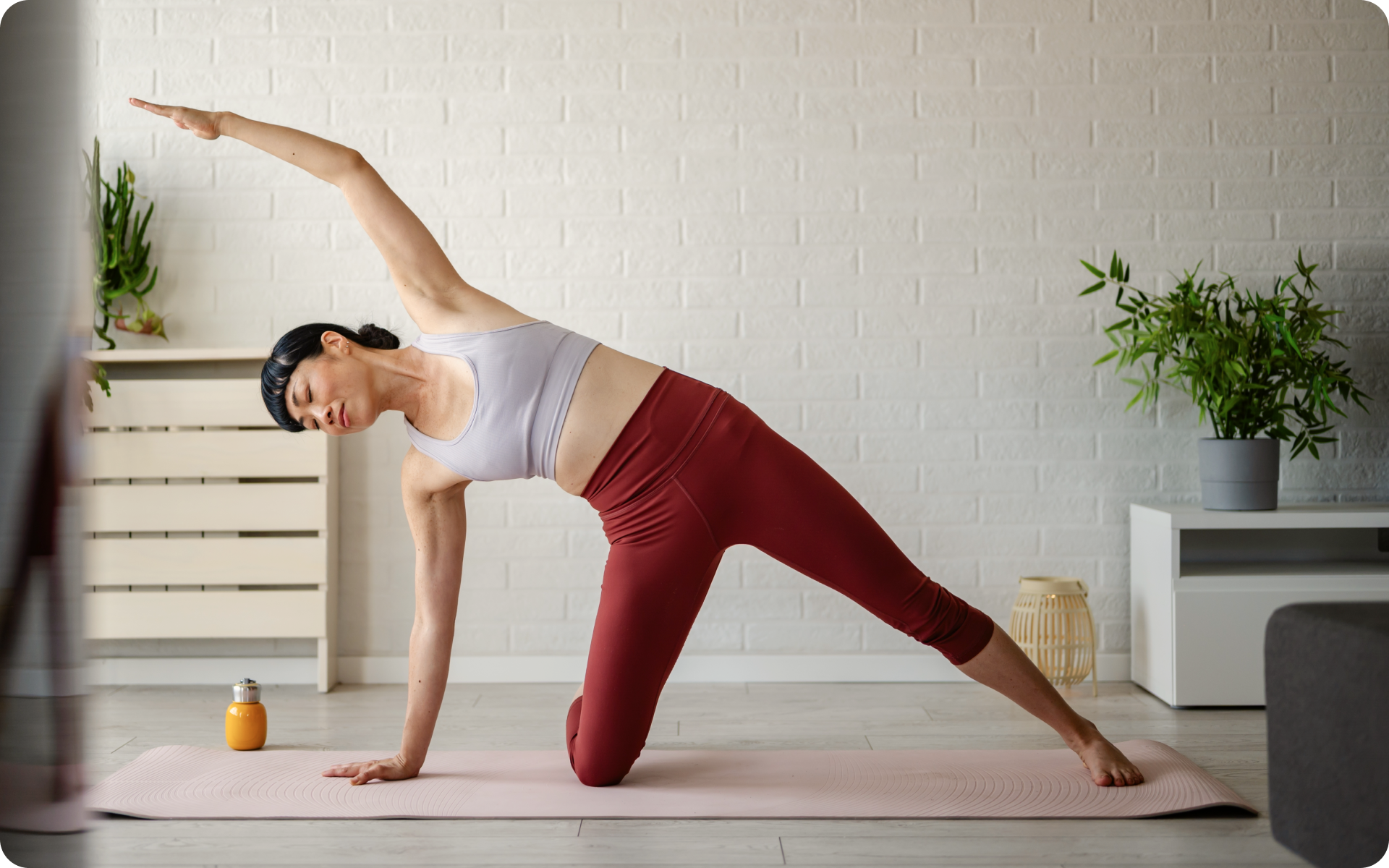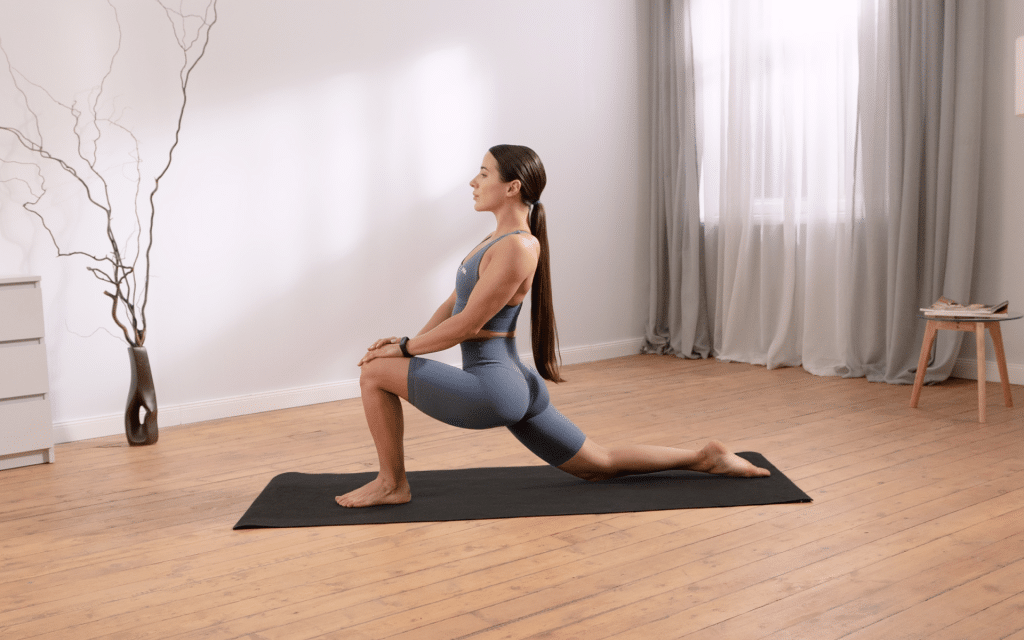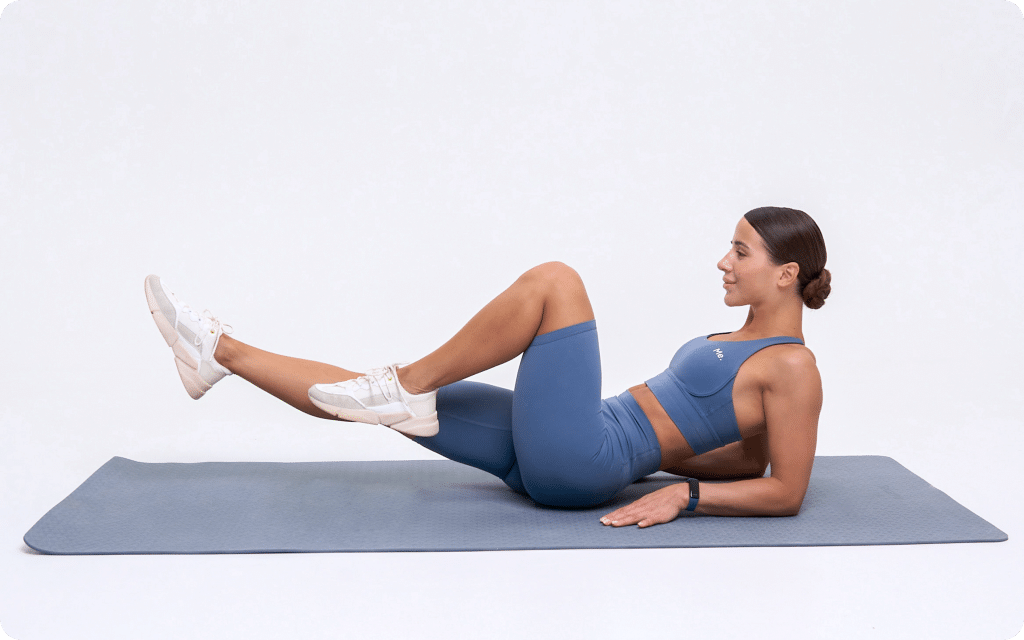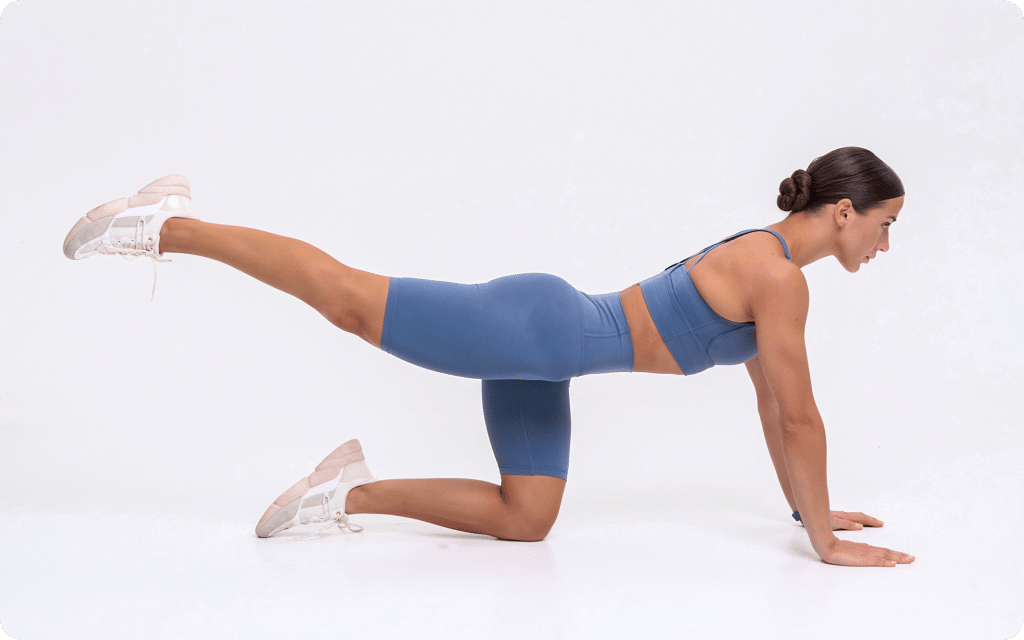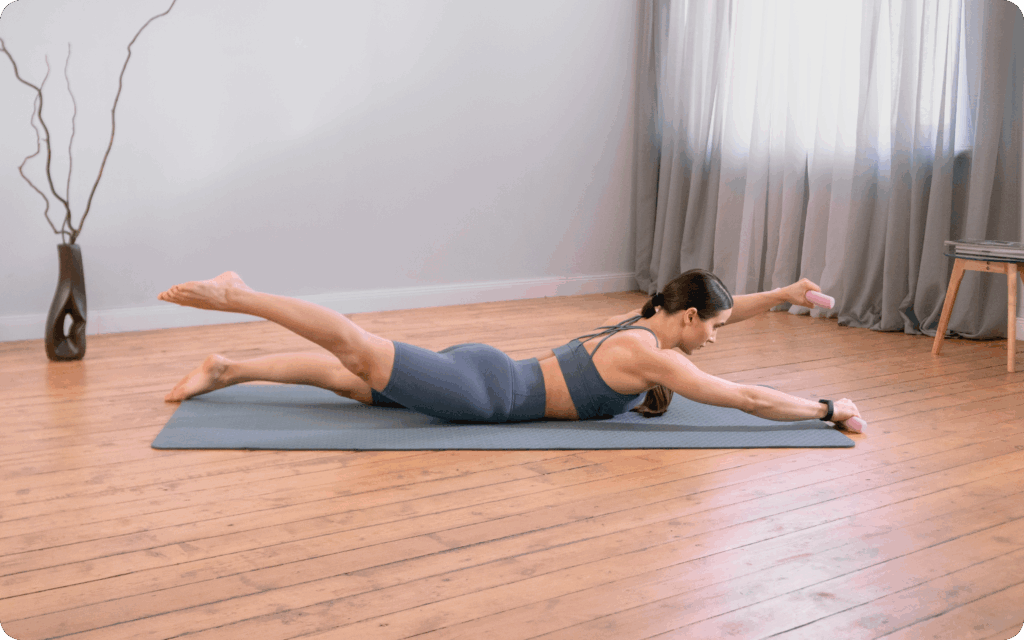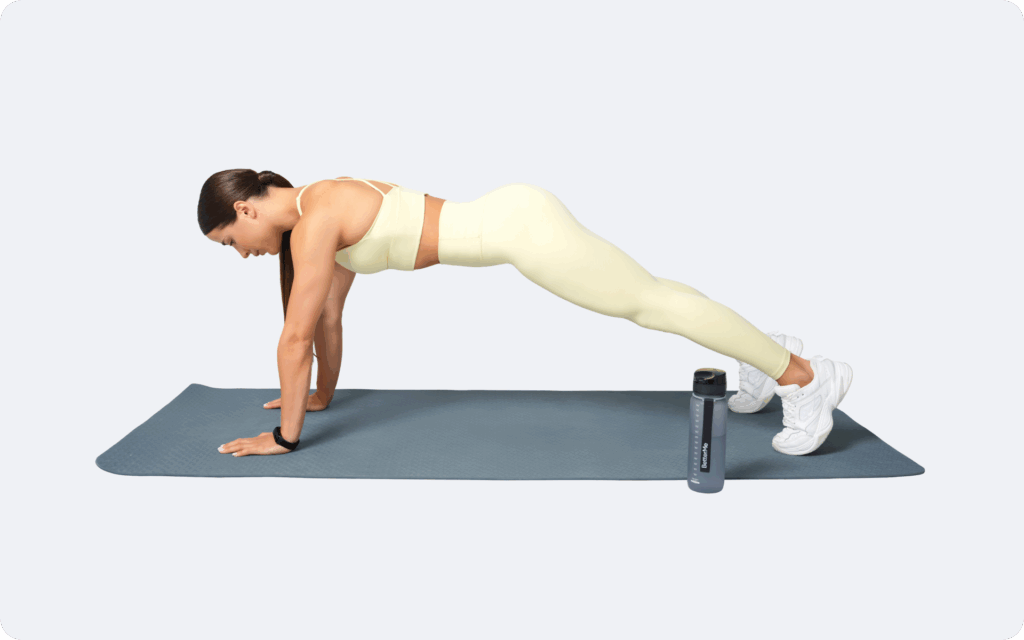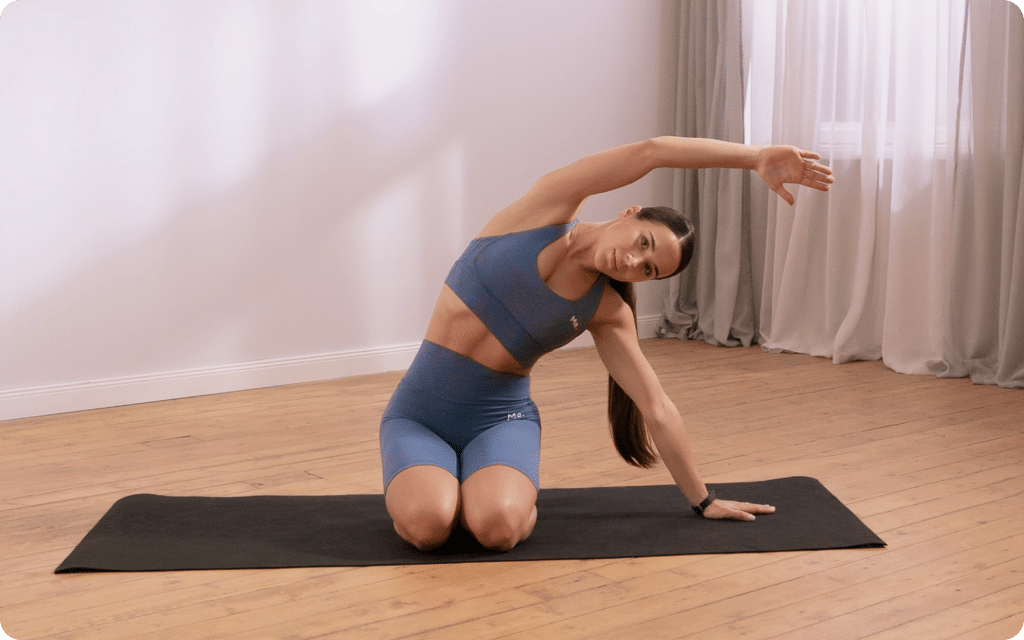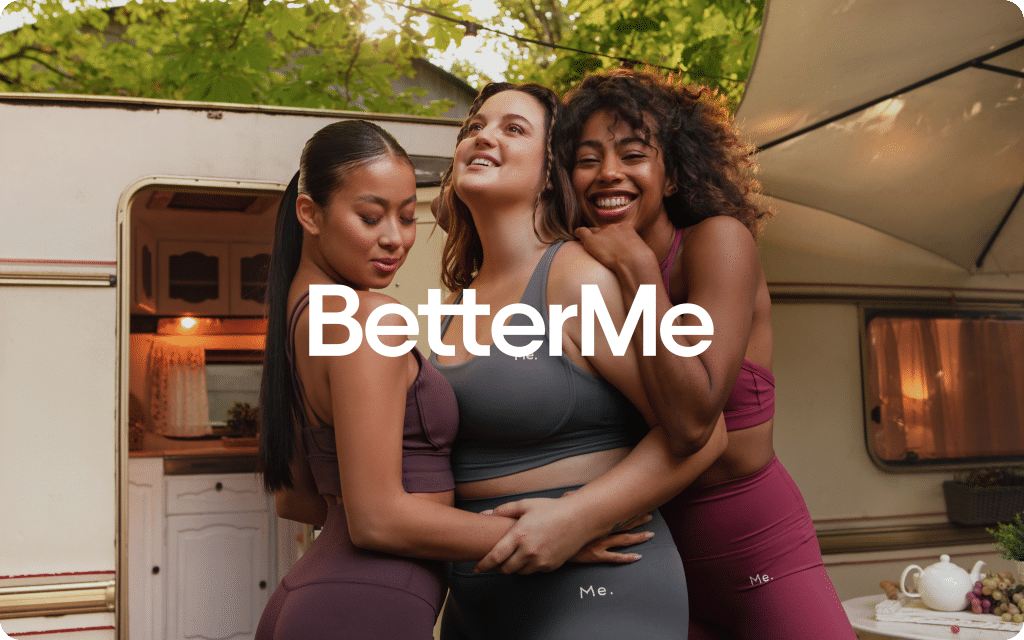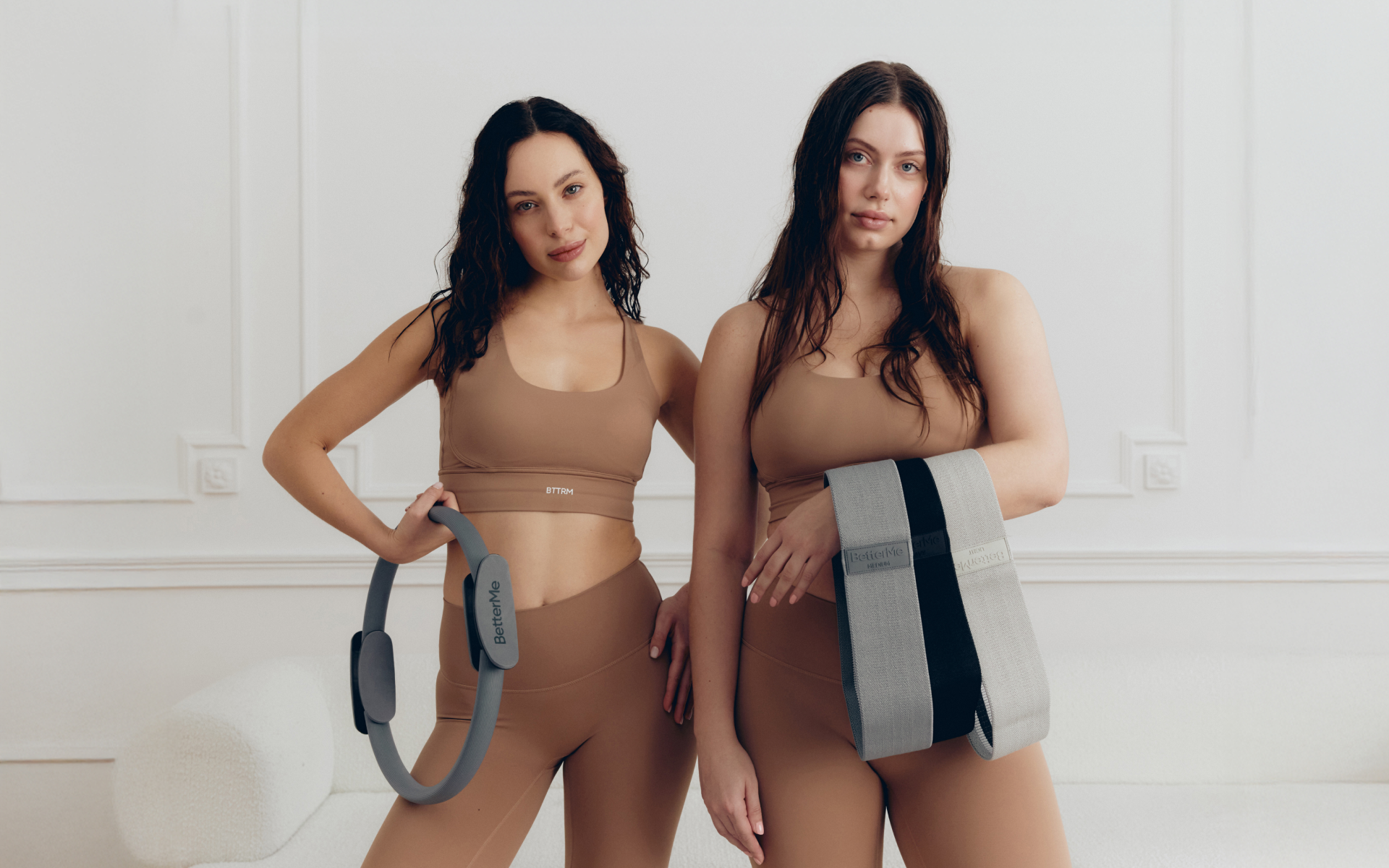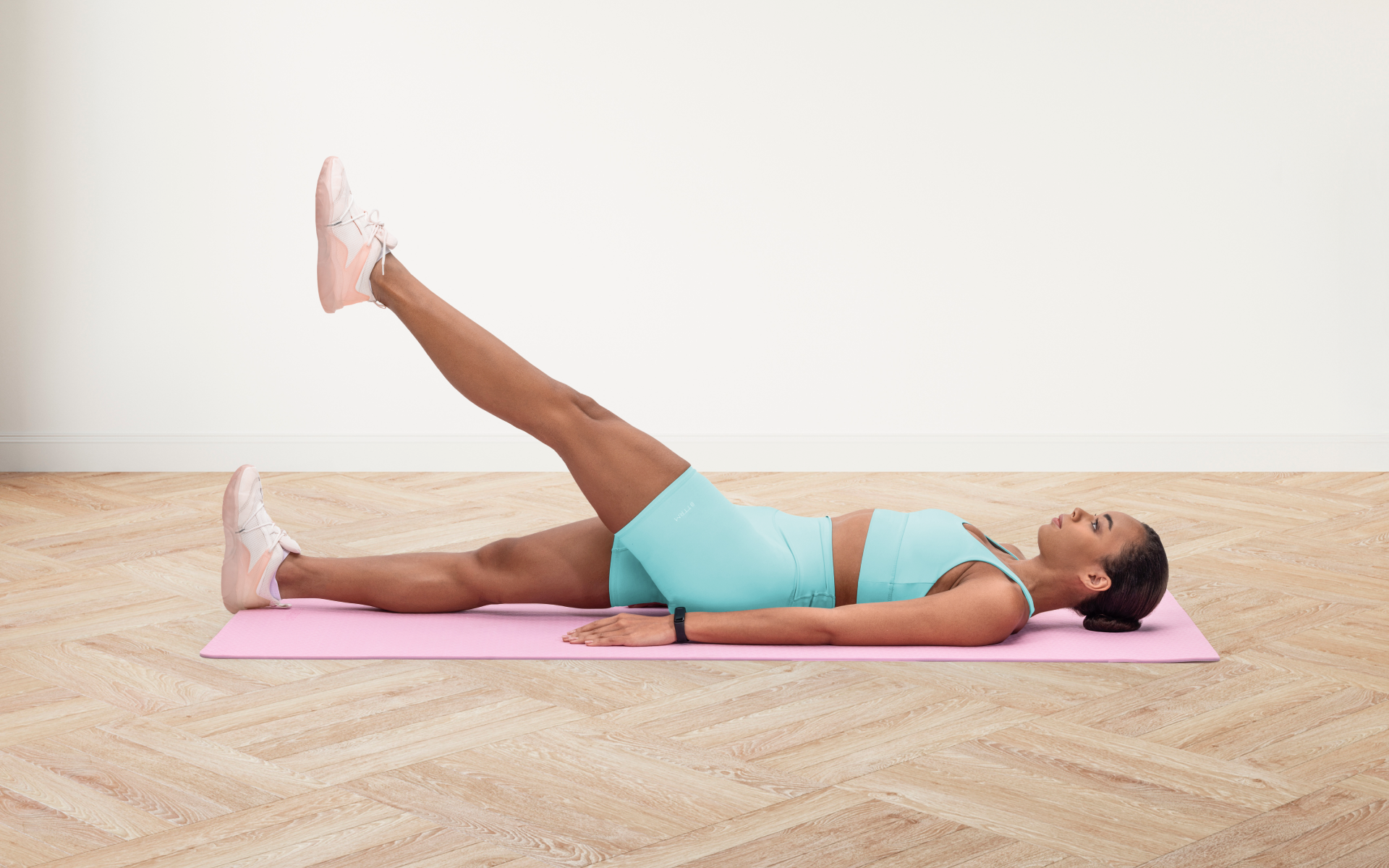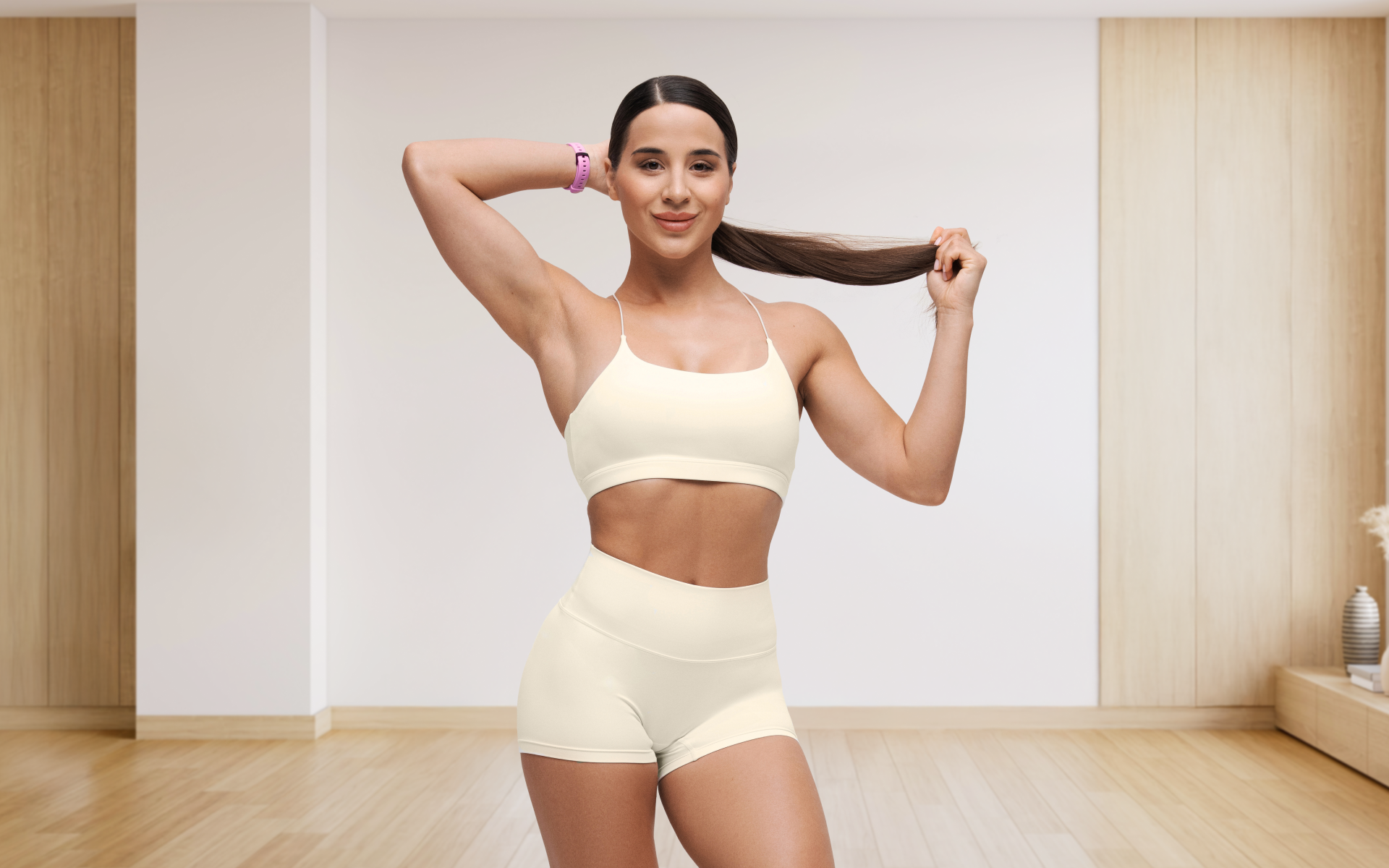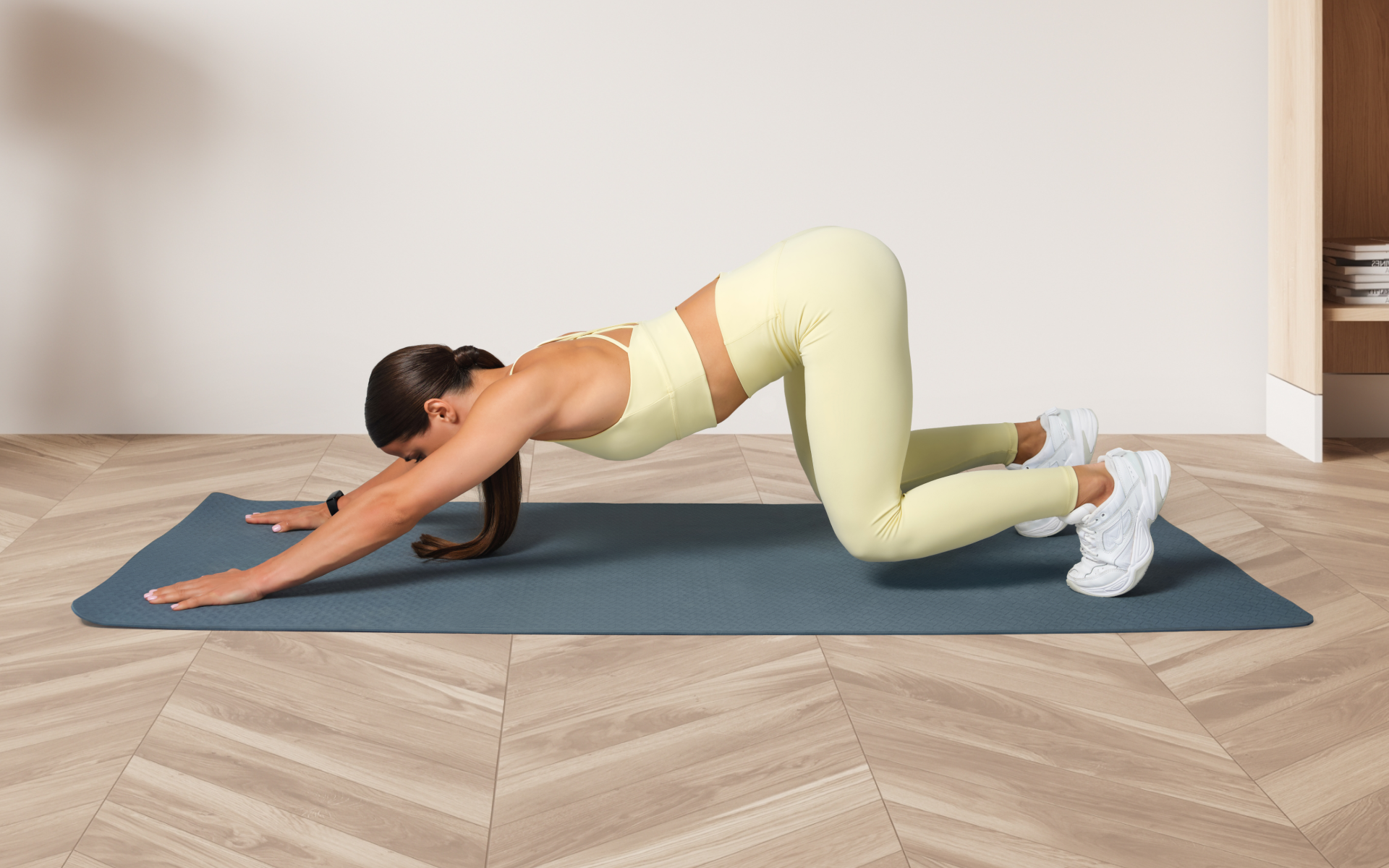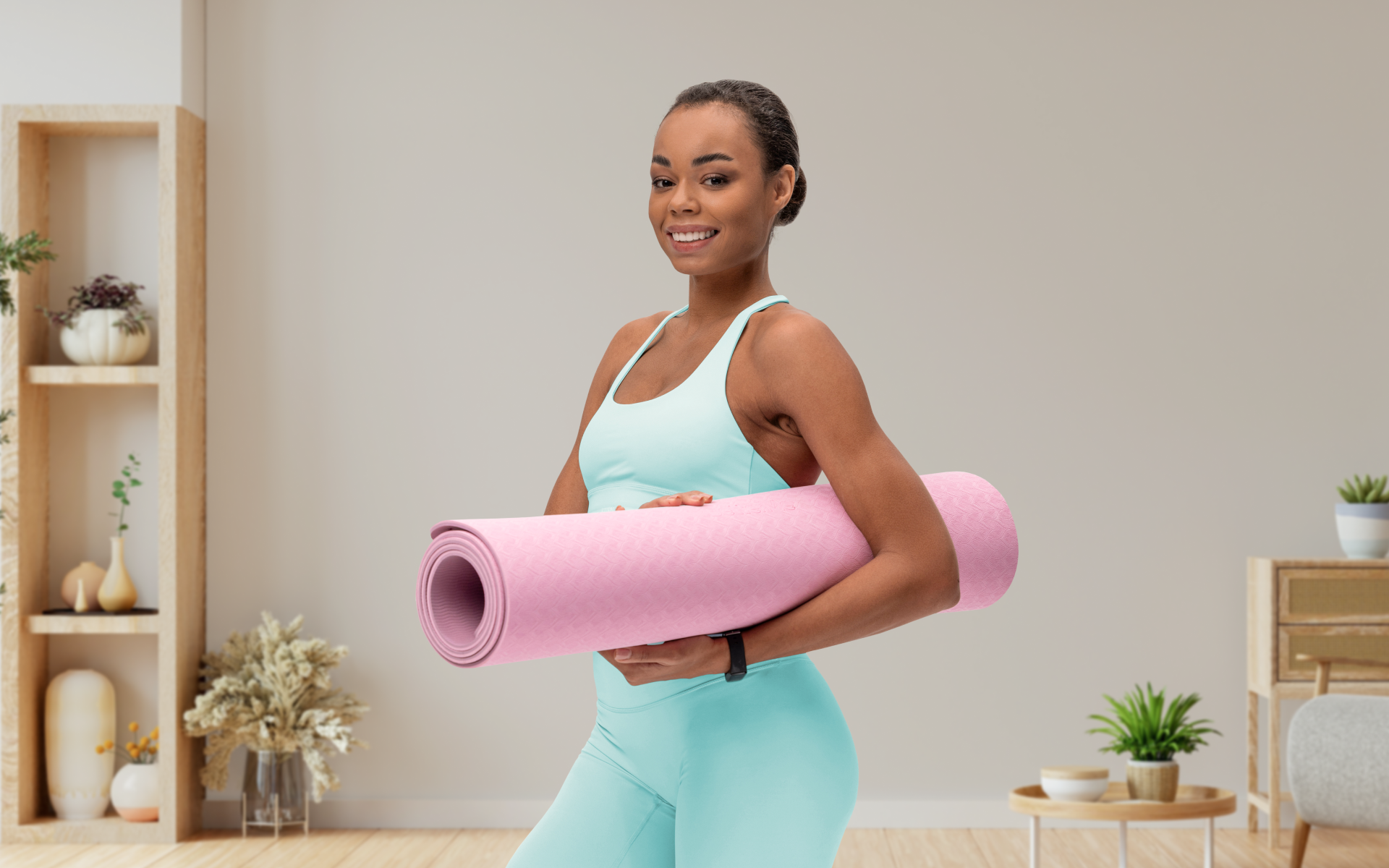The word Pilates may sound fancy or like an advanced form of training, but is it really hard?
You may have seen videos of Pilates instructors using specialized Pilates machinery, causing you to think it’s too technical for you. While reformer and other equipment truly complement Pilates sessions, they aren’t necessary for beginner trainees.
All you need is one thing – a yoga mat – that’s it.
This review sheds light on a beginner-friendly Pilates routine that can have a profound impact on people of all sizes and experience levels.
It’s your stellar way to get stronger, increase flexibility, improve your posture, and reduce back pain.
Is Pilates Hard for Beginners?
Have you decided to take up Pilates classes? First of all, congratulations.
Secondly, if you’re feeling anxious or unsure about Pilates being hard for you, the answer is simple: it’s not.
When analyzing the pros and cons of Pilates, one standout benefit is that it’s an activity that is accessible to everyone. It may feel or seem intimidating, particularly when you haven’t worked out for years.
However, Pilates can be tailored to any fitness experience. Even if your main form of exercise is walking or performing simple hip circles, Pilates can still suit you.
Simple solution: as a newbie, start with basic Pilates moves at home with just a mat.
Can an Unfit Person Do Pilates?
Yes, an unfit person can do Pilates. But what about the weight? Can an overweight person do Pilates?
Well, a large meta study consisting of 13 randomized control studies found that Pilates is a great low-impact activity that “dramatically reduces BMI and body fat percentage in adults with overweight or obesity” (1).
That’s no surprise though, as Pilates is adaptable to everyone.
Another 2025 study investigated the effects of reformed Pilates on body composition and strength. The study suggested that Pilates could reduce body composition, improve upper-body strength, and decrease anxiety scores (2).
So, if you’re asking yourself, “Should I give it a go?” you definitely should.
Reasons why BetterMe is a safe bet: a wide range of calorie-blasting workouts, finger-licking recipes, 24/7 support, challenges that’ll keep you on your best game, and that just scratches the surface! Start using our app and watch the magic happen.
Which Is Harder, Pilates or Yoga?
Pilates and yoga may be equally challenging for entry-level individuals. At the same time, both activities offer movements of variable intensity. Therefore, their difficulty level will largely depend on your current fitness level, flexibility, and health condition.
Ultimately, the difficulty of each practice is subjective and depends on your position. Here are some points to consider:
- Pilates focuses on core strength and controlled movements
- Yoga emphasizes flexibility and balance
- Pilates can seem harder for you if you struggle with repetitive movements and core engagement
- Yoga may feel more challenging if you struggle with flexibility and balance
Another key point to consider is your goal (3):
- If you aim to promote core strength, muscle tone, and posture by performing controlled, low-impact movements, you should take up Pilates.
- If you aim to improve flexibility, mental clarity, and balance, try yoga.
Ideally, you could integrate both practices into your routine, swapping daily between Pilates and yoga.
Read more: Is 30 Minutes of Pilates a Day Enough?
What Is an Easy Pilates Workout Plan for Beginners?
Creating an entry-friendly at-home Pilates workout plan doesn’t need to be complicated. We’ve rounded up the top 7 moves you’ll fall in love with as a beginner.
Firstly, you should start any Pilates session with a short warm-up:
- Deep breathing (1 minute): Stand still and place your hands on your ribs. Inhale through your nose, exhale through your mouth, pulling your core in.
- Shoulder rolls (40 seconds): Circle your shoulders for 20 seconds forward, then backward another 20 seconds.
- Cat-cow stretch (1 minute): On your hands and knees, alternate arching and rounding your spine.
- Spinal rotation (1 minute): Lying on your back with your arms extended wide, let your knees fall side to side.
After a short warm-up, it’s time to practice the 7 best Pilates moves for beginners in one session.
Toe Taps
Proper technique:
- Lie flat on your back with your feet on the floor and your arms relaxed at your sides.
- With your back pressed gently on the mat, lift your knees to a 90-degree angle.
- From there, lower your feet slowly until your toes slightly tap the floor, then bring them back with control.
- Aim for 10-12 repetitions.
Single-Leg Stretch
Proper technique:
- Lie on your back and hug your knees in. Lift your head and shoulders slightly.
- Straighten one leg while keeping the other bent, and then alternate.
- Perform 10-12 repetitions with your back pressed on the floor and your core tight.
Bird-Dog
Proper technique:
- Get on all fours with your wrists under your shoulders and your knees under your hips.
- Reach your right hand forward and your left leg back, keeping your back flat.
- Hold briefly, then return to the starting position.
- Do 8-10 reps on one side, then switch.
Swimming
Proper technique:
- Lie facing down with your arms extended overhead and your legs stretched behind you.
- Lift your head, chest, arms, and legs off the mat.
- Avoid lifting them too high – focus on lengthening from your fingers to your toes instead.
- Lift your right arm and left leg together, then quickly switch to the opposite side.
- Continue alternating in a controlled motion for 20-30 seconds.
- Increase the speed, if you’re comfortable with it.
Mermaid
Proper technique:
- Sit on your right hip with your legs slightly stacked to the left, knees bent.
- Reach your right arm overhead, close to your ear.
- Inhale to sit up and exhale as you side bend over your legs to the left.
- Perform 8-10 reps.
- Repeat on the other side.
High Plank to Pike
Proper technique:
- Start in a high plank with your palms planted on the floor, your hands shoulder-width apart, and your shoulders stacked over your wrists.
- Extend your legs and engage your core.
- On an exhale, lift your tailbone toward the ceiling, straightening your legs as much as you can (if needed, bend your knees to reach your heels toward the floor).
- On an inhale, return to a high plank.
- Perform at least 8 reps.
Quater-Squat Star Toe Touch
Proper technique:
- Stand with your feet together and your core engaged.
- Slightly bend your knees and gently push your hips back into a quarter squat.
- Shift your weight onto your right foot, keeping your left toes lightly on the floor.
- From here, tap your left toes in front of you, return to the start, then tap on the side, return, and finally tap behind you.
- Continue tapping front, side, and back as fast as possible without adding weight to your left foot.
- Hold your back upright and core tight.
- Do 10 reps on one side, rest for 30 seconds, then repeat on the other side.
A quick cool-down session:
- Child’s pose: Kneel on the mat, sit back on your heels, and stretch your arms overhead. Relax your back and shoulders. Stay in the position for up to 1 minute.
- Hamstring stretch: Sit with one leg extended and the other foot tucked in. Reach toward the extended foot, keeping your back long.
- Figure four stretch: Lie on your back and cross your right ankle over your left knee. Pull your left thigh forward to your chest to stretch your hips and glutes. Hold for at least 20 seconds on each side.
- Side body stretch: Stand tall and reach your arms overhead. Gently lean to the left, feeling a stretch in the right side. Hold for 20 seconds and switch sides.
Read more: Can Pilates Build Glutes Just Like Weight Training?
How Long Does It Take to Do Beginner Pilates?
A beginner’s Pilates session typically lasts for 20 to 40 minutes, depending on the number of exercises. Entry-level practitioners should start with shorter sessions, including warm-ups and cool-downs, and gradually increase the duration.
These shorter sessions still make a great impact on your body and mind. You may notice improvements in core strength, flexibility, posture, and body awareness (4).
If you’re aiming to shed a few pounds or maintain a healthy weight, Pilates exercises for weight loss could help you achieve such goals.
Whether you’re a workout beast or just a beginner making your first foray into the world of fitness and dieting – BetterMe has a lot to offer to both newbies and experts! Install the app and experience the versatility first-hand!
How Often Should a Beginner Do Pilates?
As a newbie, you don’t need to practice Pilates every day – 2 to 3 sessions per week is an ideal starting place. This frequency allows you to integrate this activity smoothly into your schedule and adapt to movements without overworking your muscles.
Your consistency and proper performance will yield great improvements in strength, flexibility, and posture. In addition to these benefits, consistent Pilates training can help you:
- Improve spine stabilization
- Promote concentration
- Improve your stress management abilities
- Increase body awareness
- Relax your shoulders, neck, and upper back
- Prevent injuries connected to muscle imbalances (4)
How Long Does It Take for a Body to Get Used to Pilates?
Your body will get used to Pilates within two to three weeks of consistent practice. During this period, you’ll improve core strength and muscle endurance. Your adaptation to different basic exercises may open up the space for more intermediate moves.
If you keep practicing Pilates at least twice a week for 2 months or so, you may notice visible changes in muscle tone, balance, and body awareness. Your progress will depend on:
- The exercises you choose
- Consistency of training
- Whether you’re using other forms of exercise (strength training, cardio, or yoga)
Training on a Pilates reformer under the instructor’s supervision can also speed up how quickly your body gets used to the exercises. If you have no access to reformer sessions and a Pilates instructor, it’s okay to train at home – the benefits are just as valuable.
Yes, two Pilates classes a week are enough, especially for beginners. This frequency will help you build core strength, enhance flexibility, improve your posture, and allow your muscles to recover during rest days. Start with 20 minutes, then gradually build up to 30-40 minutes as you adapt to basic moves. Pilates doesn’t directly burn belly fat, but it contributes to overall body weight reduction, including the abdominal area, according to a 2021 study (1). Combining Pilates with cardio exercises, a balanced diet, and a calorie deficit can help you shed belly fat more effectively. Pilates is definitely capable of changing your body shape, and studies have proven that. A 2023 study revealed that Pilates decreases body fat, including visceral fat. Trunk fat, thigh, and waist circumference were also found to be decreased after the training (5). Therefore, when combined with a calorie deficit, strength training, and a balanced diet, Pilates can be an effective weight loss strategy. Pilates isn’t a cardio activity, it’s a flexibility and strength workout that is focused on core stability, posture, and controlled movements. Only specific Pilates fast-past sequences of reformer classes could feel like a cardio routine. Generally, traditional Pilates is about slow moves, deep breathing, and core engagement. Frequently Asked Questions
Are 2 Pilates classes a week enough?
Does Pilates burn belly fat?
Does Pilates change your body shape?
Does Pilates count as cardio?
The Bottom Line
You’ve learned about the best exercises for beginners, potential benefits, and a simple Pilates workout schedule.
Pilates is a perfect activity – regardless of your fitness level or weight, you can do it at home. As a beginner, doing 20 minutes of Pilates two to three times a week will be enough for you. Gradually, you’ll adapt to much more difficult exercises and longer sessions.
DISCLAIMER:
This article is intended for general informational purposes only and does not serve to address individual circumstances. It is not a substitute for professional advice or help and should not be relied on for making any kind of decision-making. Any action taken as a direct or indirect result of the information in this article is entirely at your own risk and is your sole responsibility.
BetterMe, its content staff, and its medical advisors accept no responsibility for inaccuracies, errors, misstatements, inconsistencies, or omissions and specifically disclaim any liability, loss or risk, personal, professional or otherwise, which may be incurred as a consequence, directly or indirectly, of the use and/or application of any content.
You should always seek the advice of your physician or other qualified health provider with any questions you may have regarding a medical condition or your specific situation. Never disregard professional medical advice or delay seeking it because of BetterMe content. If you suspect or think you may have a medical emergency, call your doctor.
SOURCES:
- Pilates for Overweight or Obesity: A Meta-Analysis (2021, pmc.ncbi.nlm.nih.gov)
- Effects of reformer pilates on body composition, strength, and psychosomatic factors in overweight and obese women: A randomized controlled trial (2025, nature.com)
- Yoga vs. Pilates: The Differences Between Two Great Exercises (2024, health.clevelandclinic.org)
- Pilates – health benefits (n.d., betterhealth.vic.gov.au)
- Pilates-mat training and detraining: Effects on body composition and physical fitness in pilates-trained women (2023, sciencedirect.com)
